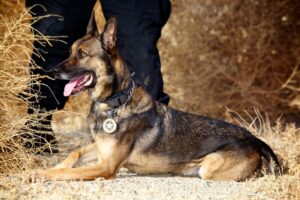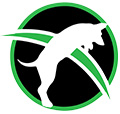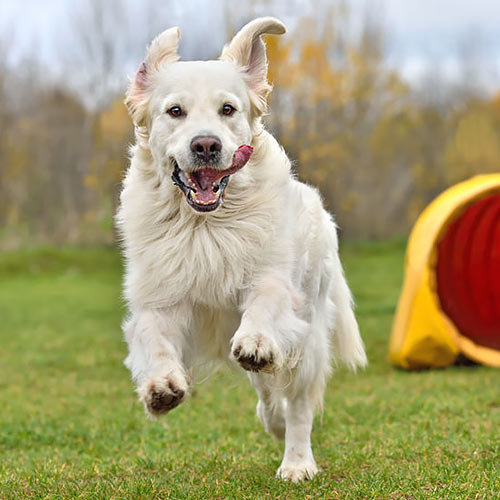In light of today’s chaotic society – with unchecked riots, homicides, anti-police racket, defunding – one thing is becoming crystal clear. The pressure is on for law enforcement to fine-tune their operational procedure and the training behind it. No matter which side of the police argument you find yourself, all eyes are on law enforcement – good, bad, or otherwise.

Let’s look at this particularly in the realm of police dogs. If you have been a regular visitor to our DogBlog and/or website, you know that we back the blue. However, some of the remainder of this article may tempt you to think otherwise. Be assured, all criticism is meant to be respectful and constructive.
Police dog agencies must aim for a heightened proficiency. The day of showing up for in-service training just to “get a day off” or visit with “the boys” has been over for years. Regrettably, some handlers haven’t yet realized it. Sheriffs, police chiefs, and K9 supervisors should
- Be involved. Show up to training. Ask questions. Get a grasp of the team’s capabilities, weaknesses, strengths, limitations. We know you’re busy but this step must not be overlooked.
- Challenge K9 teams to be the best they can possibly be. Lead by example. Get “your own ducks in a row” and earn their choice to emulate your high standard.
Some K9 teams are merely public relation stunts to get more votes for someone’s reelection. These teams tend to travel between mediocrity and uselessness. In the rare event they are deployed, problems easily and quickly arise because they are rusty, haven’t been to in-service training in weeks or months, have no involvement from superiors, and are left to wonder if/where they really fit into the department. Encourage these handlers to aim high. Let them know they’re more than a decoration.
For teams to reach a heightened proficiency, it would do some teams well to see the demise of the good ol’ boys club. Admittedly, many officers find it hard to trust others (yes, we understand the whys and wherefores of this). The danger comes when we are not willing to learn something from someone outside the “club.” We all can benefit from an open mind and willingness to try new things. Don’t shrug off another’s input – they may be just what your agency needs.
Utilize contemporary methods. Times have changed but, unfortunately, some trainers are stuck in a rut. Today we have better training aids than we’ve ever had. K9 case law has amended some of the ways things must be done differently than decades ago. From detection methods to teaching the “out,” from deployment standards to certification standards, some things have improved within our field of service. Outdated methods should be buried when newer, forward-thinking methods are available. Example: for years handlers were taught to “choke out” the dog when he/she doesn’t out. Videos surface about the abuse of these police dogs. Today we have much better methods. Better trainers are aware of this – and train on it regularly. The Out is an issue of control and handlers who cannot control their dogs are a liability just waiting to happen.
In order to increase the proficiency of K9 teams, many agencies would benefit from doing a better job selecting handlers. Some handlers are too lazy, too fat, don’t care, wrongly assume it’s an easier position within the department. And then there’s the real nut-job who likes to “be K9” because he thinks it’s a chick magnet. Oh, boy. Anyway, teams will be stronger when the handler takes his job seriously. The handler should be a good officer to begin with. He needs to be willing to work harder, must be able to lead, and MUST be able to think ahead of his/her dog! Handlers need the longest handler school the agency can afford – especially first-time handlers. Two weeks is not enough to learn how to handle the dog in detection, obedience, apprehension, and tracking. Be willing to invest in this team! The handler is 50% of the team. If you fail here, the best the team can be is 50%.
Maybe this last point should be the first. Agencies could do a better job purchasing solid dogs. Yes, we recognize that many departments are on a tight budget. However, don’t cave into the temptation that you must settle for an inferior dog. Weak dogs currently on the team should be washed out. Yes, it costs to do so. But that is better than costing an officer his/her life because the dog didn’t have the courage to do his/her job on the street. Shop around. Don’t be stuck in the rut of purchasing a dog from Guy A just because you’ve always done so (yes, if Guy A is good then you’ll want to stick with him, but just be open to other means of securing a good K9 candidate). The dog is 50% of the team. If you fail here, the best the team can be is 50%.
Here at Conifer Canine, you can be assured that we will put our best efforts into training the K9 team to the highest level of operation they can attain. We’re not interested in mediocre. Our certifications, maintenance training, and handler school are designed to produce a highly functional team that is fit for the challenges of the bizarre sphere in which we find ourselves. With your support, we’ll help to mold both handler and dog into a proficient team that is ready for real-world operational environments.
Yea, we know. We’ve probably hurt someone’s feelings and stepped on a few toes with the article. Sorry…or not. Our goal is to produce a solid operational team where everybody gets to go home at the end of the day.

